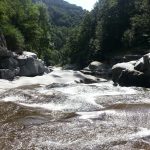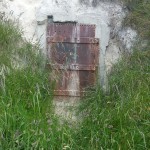ANZAC Day is time to reflect on New Zealand’s role in the World Wars, but also a day off to be put to good use. Once the dawn ceremonies were over, KL, Dad and I decided to spend the rest of the day tackling a new walk created by the Otago Regional Council. The Leith River Trail follows its namesake river from Leith Valley through the city and down to the sea, an easy wander which would give us time to reflect on both the place of this river in our community and the victims and survivors of New Zealand’s past wars.

We juggled vehicles to ensure we had a ride waiting for us at the end of the trail, then drove in circles fruitlessly seeking the start point. Eventually we realised we’d driven past it early on, and sheepishly returned to the junction of Malvern St and Rockside Rd. Here we found an information panel describing our walk. Turning onto the path which followed the Leith from here, I was struck by how much this view reminded me of the Cervo River in Italy.
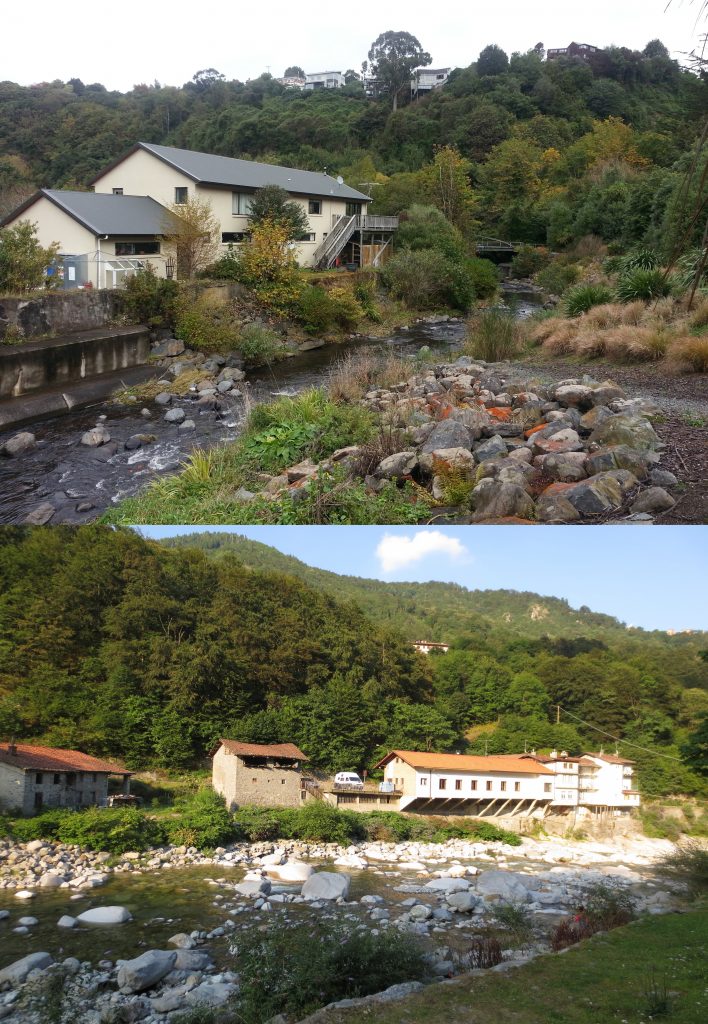
The trail begins below the Ross Creek Reservoir, established almost 150 years ago, and near the old farmstead of Craigieburn. Much further up the Leith is another reservoir, Sullivans Dam, which we have already explored.
I shook off my memories of distant lands and hurried to catch up with the others, who had already reached the first bridge over the river. On the far side we met the first and only real challenge to navigating this track with a pram. It took two of us to get it up the steep wooden staircase, but soon we triumphed and were rewarded by the sight of an old powder store for the derelict nearby quarry.

Beyond the bushes a craggy cliff loomed above us – the site of the Woodhaugh Quarry which opened in the early 1900s to provide material for our young city’s roads. The last stone was quarried in 1949 but the crushing plant ground (literally!) on until 1955.
At the next bend in the track we stumbled across a pixie seated upon a rock and debated whether the fabric creature had been left here as a message or simply to cheer our day. We crossed back over the Leith and found the third stop of our journey, like the others indicated by a spray painted pink heart.

This was the boulder trap, made from upcycled railway tracks and installed by the ORC in the late 1960s to catch all the debris from those famous Leith floods, some of which once troubled the quarry we’d just passed.
We then passed the Woodhaugh Hotel at the corner of Woodhaugh St and Malvern St, looking spiffy with its flash paint job. The hotel was licensed from 1883 until 1892 and the scene of much excitement during its short existence. At least twice drunken patrons attempted to ride their horses directly through the door.
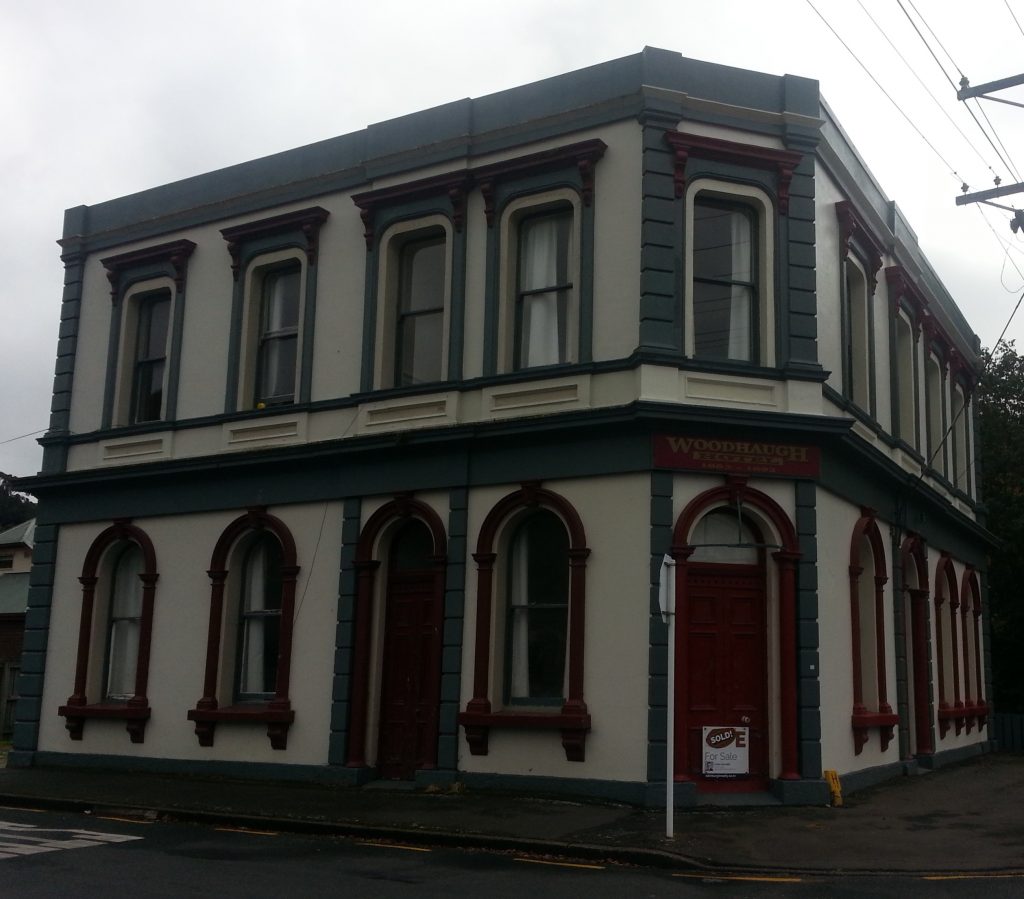
And in 1890 wood-carter James Tabor left his horse and cart outside while he went into the hotel to “transact some business”. While he was engaged in this business one of the horses took fright and his Canadian companion John McCrae attempted to intervene, only to be dragged several metres and crushed beneath the cart. He was quickly brought into the hotel while the doctor was sent for, but alas it was too late. The horse was eventually corralled after damaging two fences and another cart.
In 1910, long after this building was no longer a hotel, a small fire was reported here. The event was completely insignificant apart from the fact that the building’s owner was said to be “Mrs Rossbotham”, perhaps wife of the man who feuded endlessly with the Finnertys of Nichols Falls.
Keeping a look out for marauding horses, we crossed Malvern St and entered Woodhaugh Gardens – much quieter today than they had been the day of the Town Belt Traverse. We exited the garden by the George St bridge where we found heart number five (we’d missed number four somewhere in Woodhaugh, to the great chagrin of KL’s eldest child).
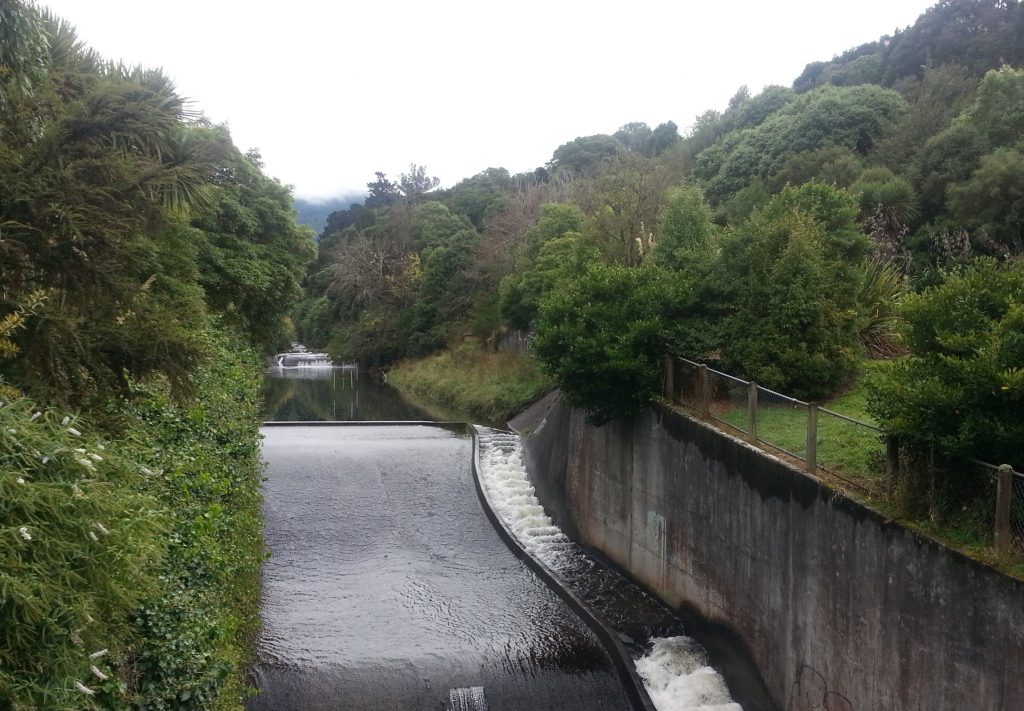
I’d always wondered about that strange staircase in the river and it turns out it’s not for human benefit at all – it’s for the trout and salmon that find their way up the Leith to spawn!
Then we headed across to the Botanic Gardens in search of number six, which required a detour to the duck pond. There we found the bronze trout statue which commemorates the 1869 release of the first acclimatised fresh water game fish in New Zealand, into our very own Leith!

We followed Lindsay Creek which flows through the garden before merging with the Leith, and discovered a rare treat on the grass verge. A basket fungus or Ileodictyon cibarium had somehow managed to flourish in this high traffic area without being destroyed.
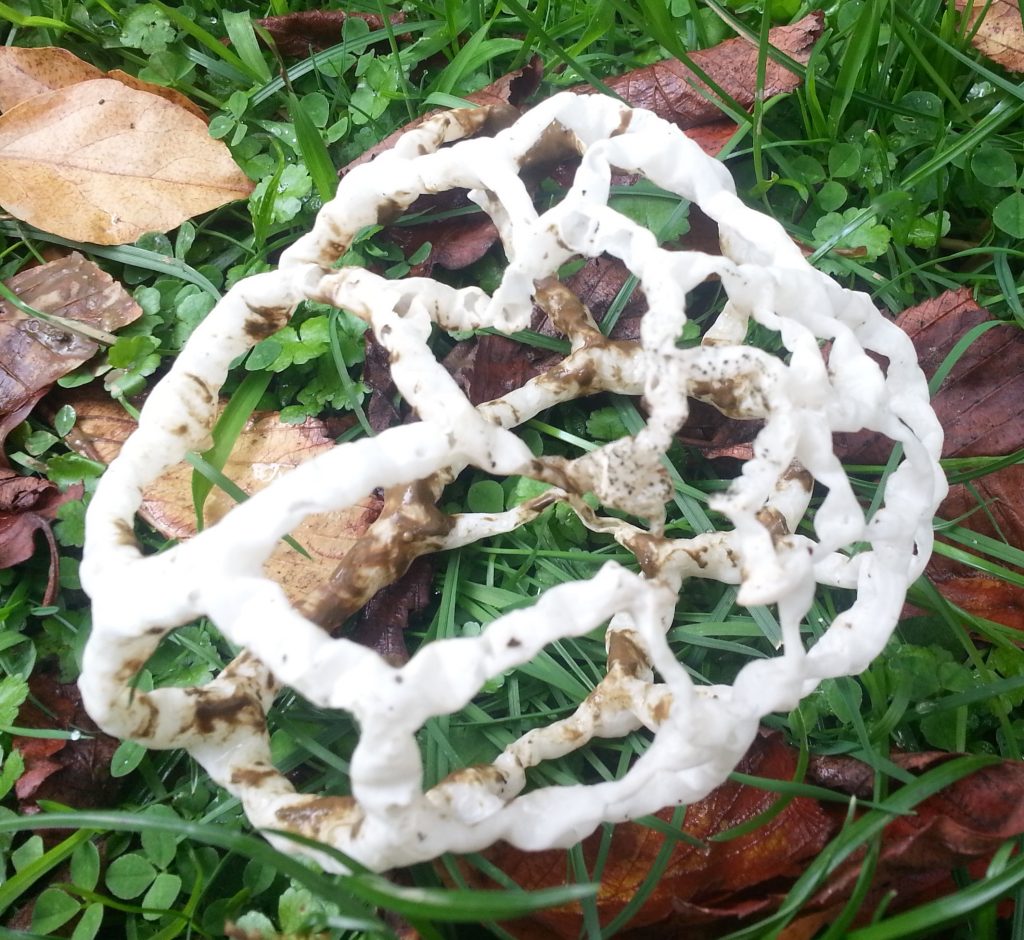
Emerging from the Botanic Garden we entered the student jungle at Leith St. We skulked round the back of the clock tower then turned down Leith Walk to approach the heart of the Otago University campus. What we hadn’t bargained for was the ANZAC ceremony still in progress, and the fact that our next way point was on the other side of the river, down in the newly-renovated flood-protection/relaxation area behind the St David Lecture Theatre.
I snuck behind the staff club, followed by KL’s eldest, Emily, who had briefly forgotten the travesty of our overlooked number four marker. We made it to our target, the Sister Stone, installed in 2011 to celebrate the bond between Dunedin and Edinburgh. The sculpture is carved from Scottish granite while a twin of Otago stone sits near the Edinburgh Leith. I can only hope that one day I am able to lay my hand on the second of these stones.
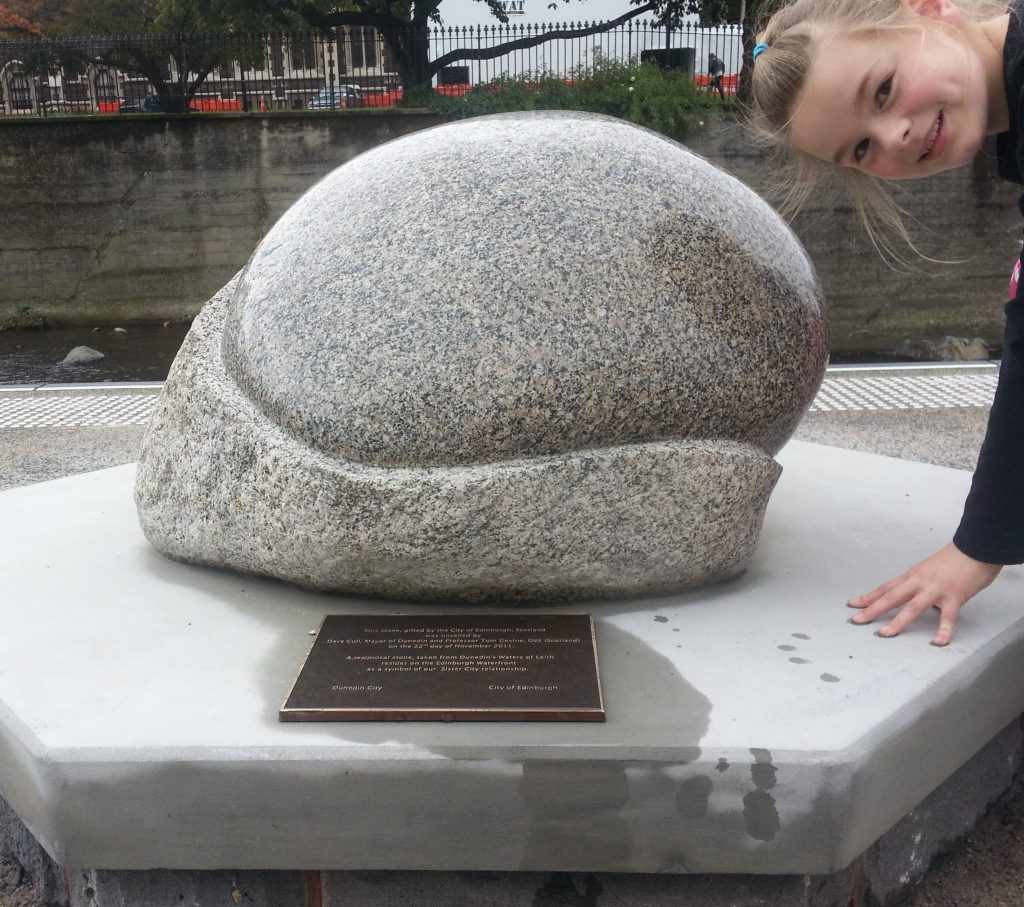
On our way back to join the others we paused for a photo op with an antique weapon.
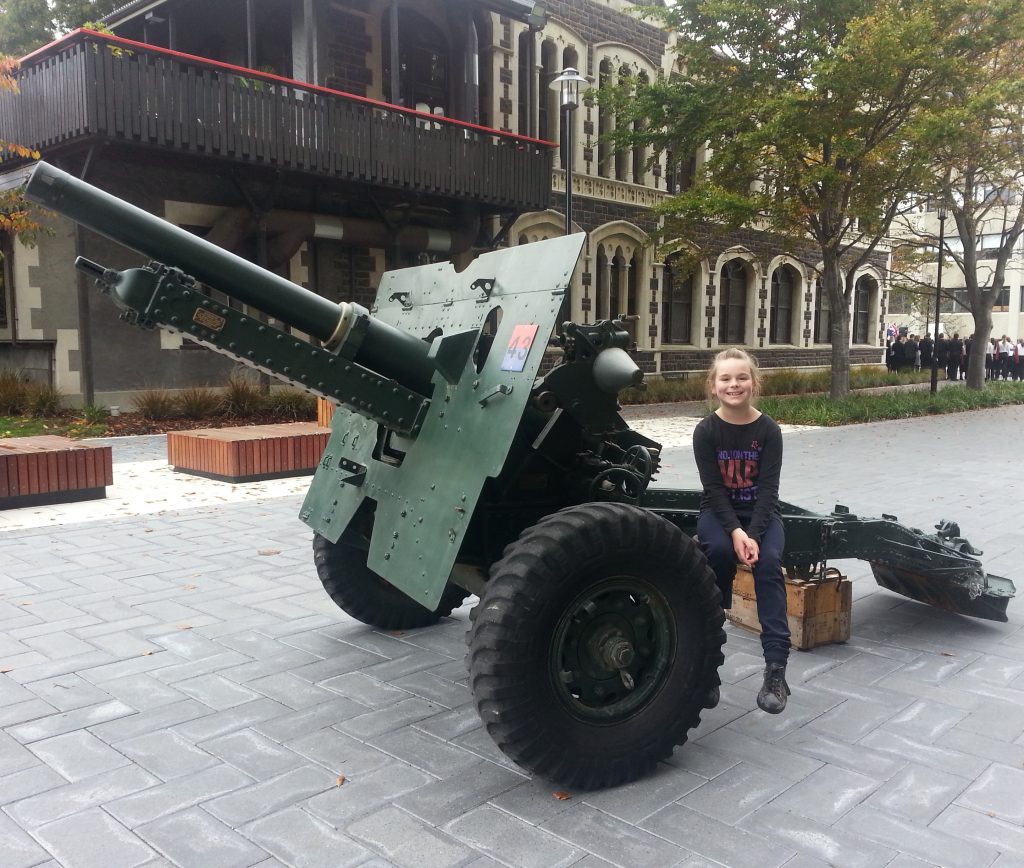
We rejoined the rest of our companions and continued along the Leith behind the Richardson Building, a route I’d walked regularly when I attended University, often stopping to watch the trout as they headed upstream. Alas, today the Leith was empty of my old friends. We rounded the corner by the ITS building which straddles the river, approaching another section that has been redeveloped since I last came this way.
Then we left the University behind us to enter the Otago Polytechnic zone. We were searching for the “albatross bridge”, which KL remembered having found once before. The artwork consists of a welded steel rod albatross head added to the existing bridge which then became the albatross’s outspread wings. The full impact of the sculpture, installed in 1992 by art school student Bill Ryalls, is best seen from a distance. But the best photograph I could manage was from the bridge itself.
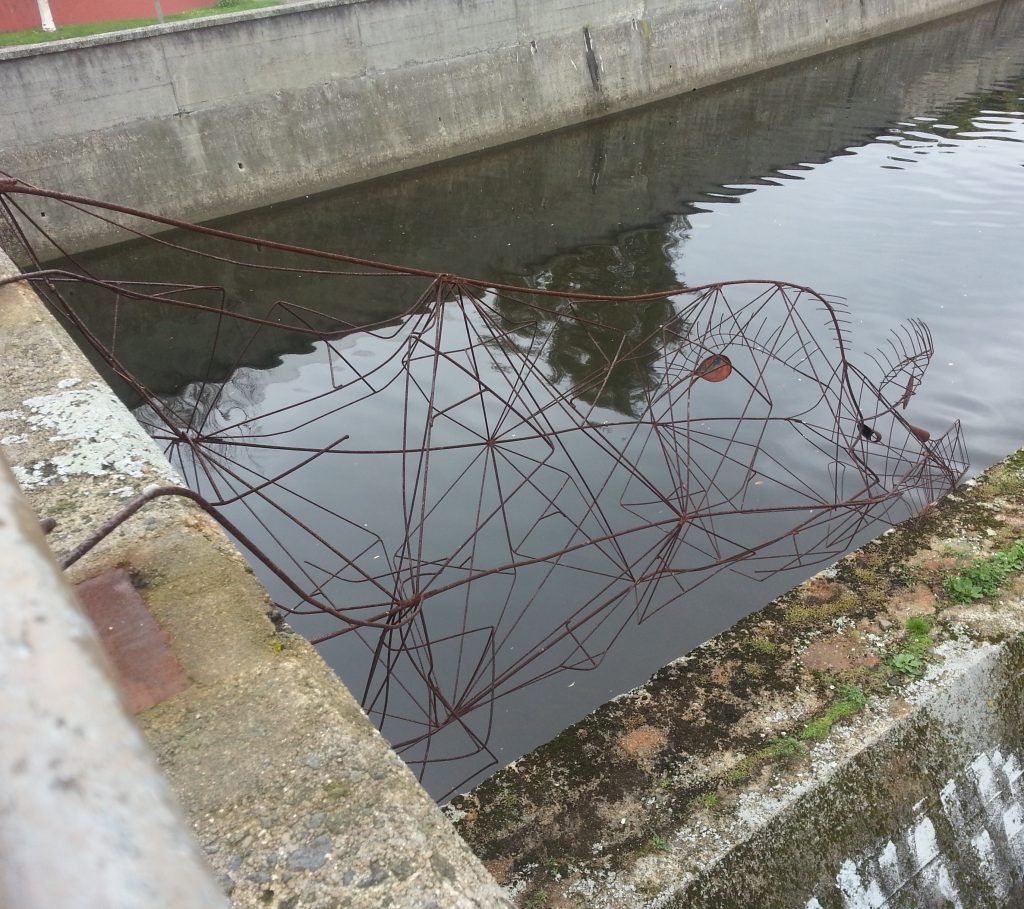
Now we were on the final stretch, with only the stadium to pass before we reached the ocean. We walked alongside the concreted channel, under the road and railway bridges, until we could follow our river no further. Somewhat belatedly, we realised we might actually be on the wrong side to find our coveted final heart, but decided not to backtrack to the last bridge.
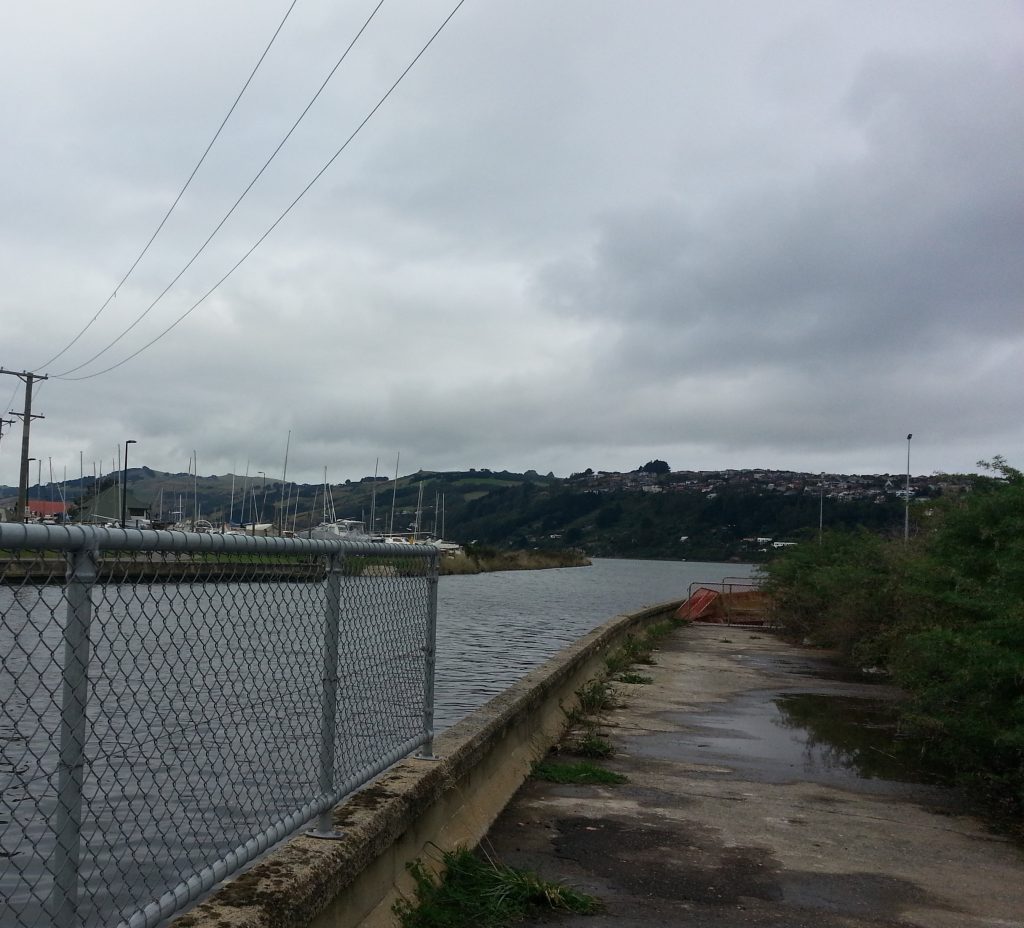
We farewelled the Leith as it flowed out into the harbour before making our way back to the vehicle we had prepared earlier. Our 4km trail had taken us from a forested valley haunted by kereru and kotukutuku, through gardens and grand learning institutions, all the way to the ocean. Now it was time for us to part ways and reflect on what we had learned.
References:
RESIDENT MAGISTRATE’S COURT. Evening Star, Issue 7660, 10 July 1888
CITY POLICE COURT. Otago Daily Times, Issue 8446, 20 March 1889
THE COURTS—TO-DAY. Evening Star, Issue 8365, 17 November 1890
INQUEST. Otago Daily Times, Issue 8961, 13 November 1890, Supplement
FATAL ACCIDENT. Evening Star, Issue 8361, 12 November 1890
FIRES Otago Daily Times, Issue 14800, 6 April 1910
Materials and interpretative signage provided by the ORC

